
IT’S EARLY on a Saturday morning in Coventry, England, the spiritual home of British sports car maker Jaguar. Spring sunshine bathes the verdant English countryside in a golden hue as our entourage pulls into the car park of a large industrial complex.

The modern but otherwise unremarkable architecture could be the shop front of any mid-size engineering firm, but step through the glass doors and the first thing to greet you in the large, open-plan foyer is the sleek, low silhouette of a XJR-9 TWR Silk Cut Racing Jaguar.
Not far away is the equally distinctive shape of a Jaguar XJ220 supercar, in royal blue, flanked by an immaculate, meticulously restored E-Type roadster. On a turntable in the centre of the room and holding pride of place is a severely distressed-looking Series 1 Land Rover, slowly revolving on a turntable to allow viewers to take in the full glory of its mish-mash of dented panels and decades of hard-won patina.
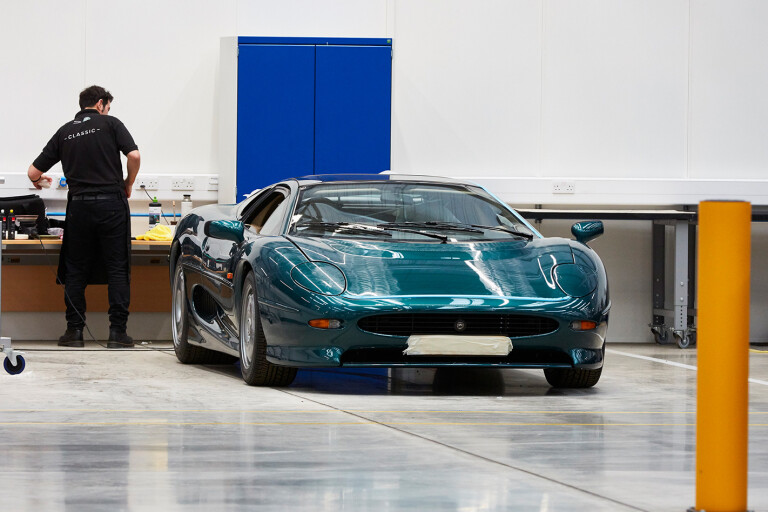
Large photographs of iconic Jaguars and Land Rovers adorn the space, lending the look and feel of a particularly well-curated automotive museum. But unlike museums which are places where cars go spend their twilight years, this is a place that’s dedicated to restoring Jaguars and Land Rovers to their former glory and sending them back out to the road.
This is Jaguar Land Rover Classic Works, and its Director Tim Hannig soon arrives to meet us, dressed casually in blue jeans and a dark sports jacket. German by birth, he greets us warmly in precise, Western European English, and our tour begins.
Hannig’s path to the directorship of JLR’s restoration business is not that of your typical auto executive. In fact, prior to taking the reins of the purpose-built facility in September 2015, he’d spent more time working for a German forklift company than for any auto-maker.
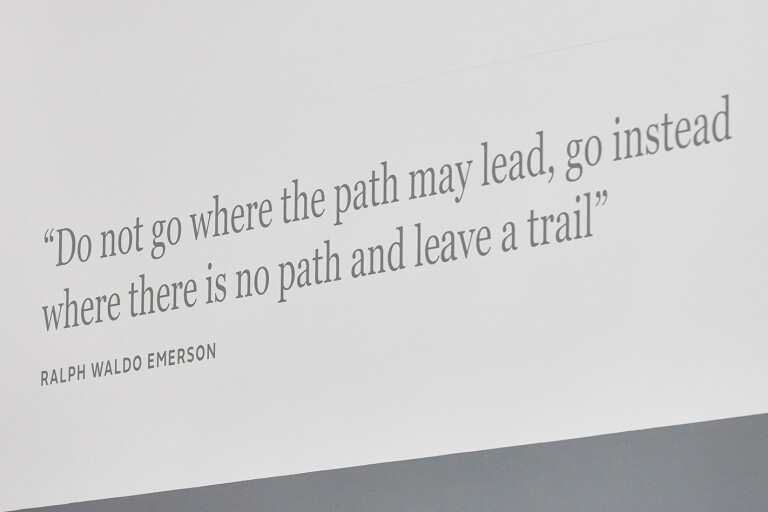
But Hannig agrees; this was a remarkable opportunity for a car enthusiast and Jaguar fan to head up the fledgling operation that was tasked with offering rebuilt cars, servicing, parts and experiences for owners and enthusiasts of Jaguar and Land Rover vehicles, at a brand-new, multi-million pound, purpose-built facility.
“The company had the intention to support the enthusiasts of classic Jaguar and Land Rovers a lot better than in the past,” Hannig says.
Jaguar Land Rover Classic Works is part of Jaguar’s Special Operations, which Hannig explains: “It’s everything that doesn’t really fit into the core business. The intention was to create a dedicated team that specialises in taking care of anything that has been out of production for ten years or longer. So anything where the core business wouldn’t actually focus on it anymore, we take it on and try to cherish that.”
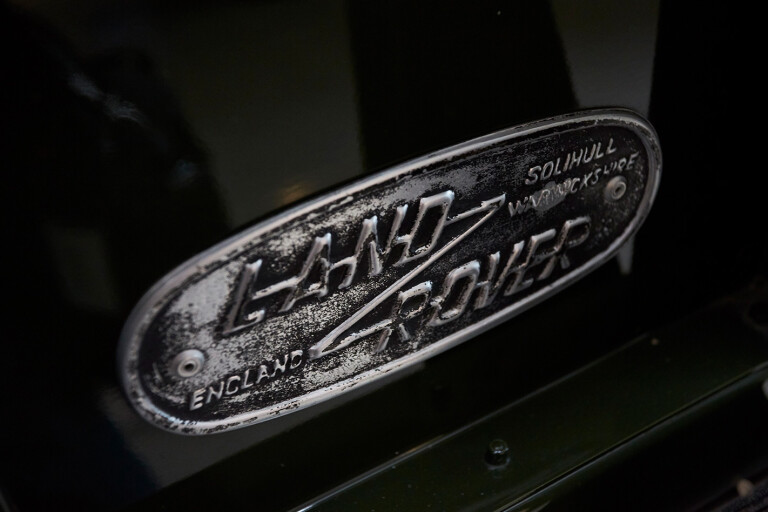
Hannig admits that when he was first hired it wasn’t even clear what the new business division would or should look like, and that they initially had a lot of discussions about what it should and should not do. He readily admits that at this formative stage there’s still a lot of “educated guesswork” in establishing what customers want.
However Tim and his team recognised relatively quickly that there is an enormous demand for spare parts for classic Jaguars and Land Rovers, and this has quickly become “the backbone; the foundation of the business.”
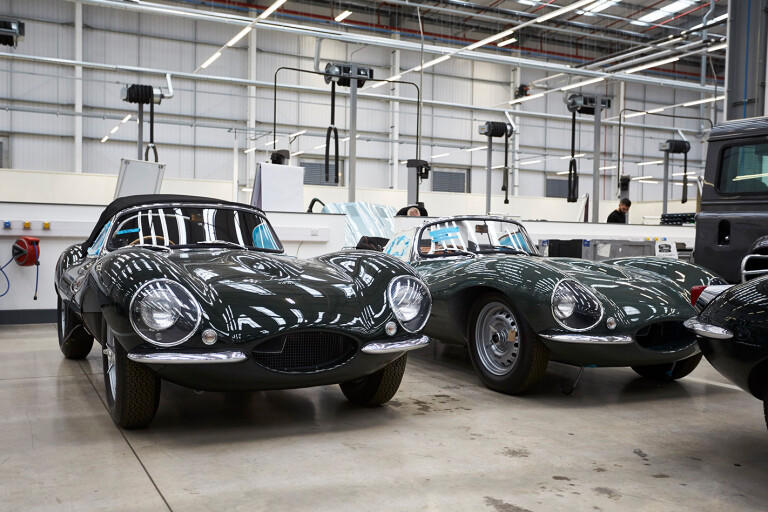
But the journey to develop an operation that could supply these rare and often increasingly hard to find parts helped them recognise that there is also a market for people who would like an operation such as JLR to restore their cars, and others who would like to buy a fully restored car from such a trusted source.
“That is because there are lots of customers and clients out there that are enthusiasts but who don’t really know how to do it. We resolved this with the Reborn Program; we go out and buy cars that are good, bring them back, restore them and sell them for a fixed price.”
Hannig acknowledges that price is not low: “We can do a lot of things; but we can’t do cheap,” he says with a grin, pointing to the fact the company pays a labour premium in using Jaguar-Land Rover employees for its restoration work.
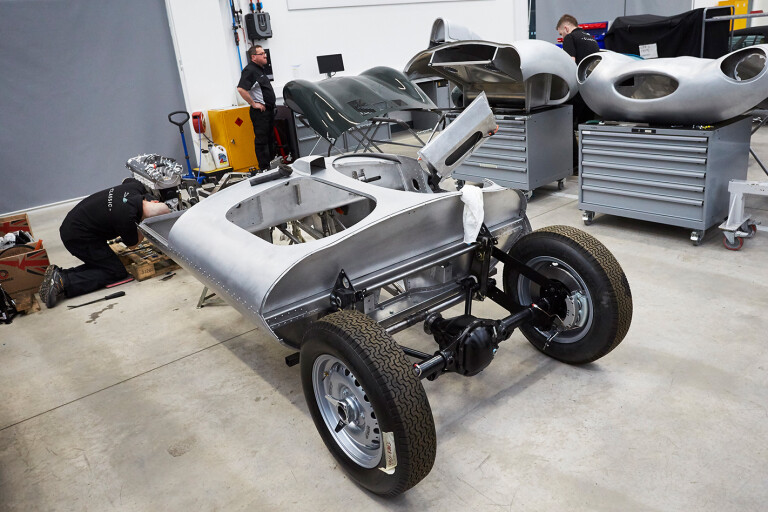
“Compared to other restorers who do it in their sheds, we have higher costs. Plus, we restore them to factory-restoration specification.”
Surrounding us in the showroom are multiple examples of the Reborn program, including the aforementioned XJ220 supercar and an immaculately restored Series 1 Land Rover that I’ll warrant looks better than it would have done when it first rolled off the assembly line in 1948.
Hannig believes the extraordinary success of the Reborn Program comes down to the fact customers appreciate the transparency of the model.
“We can explain why it costs what it does, and [that] it’s not cheap but it’s worth the money, and people like this simplicity and the risk-free [nature of the] transaction,” he says.
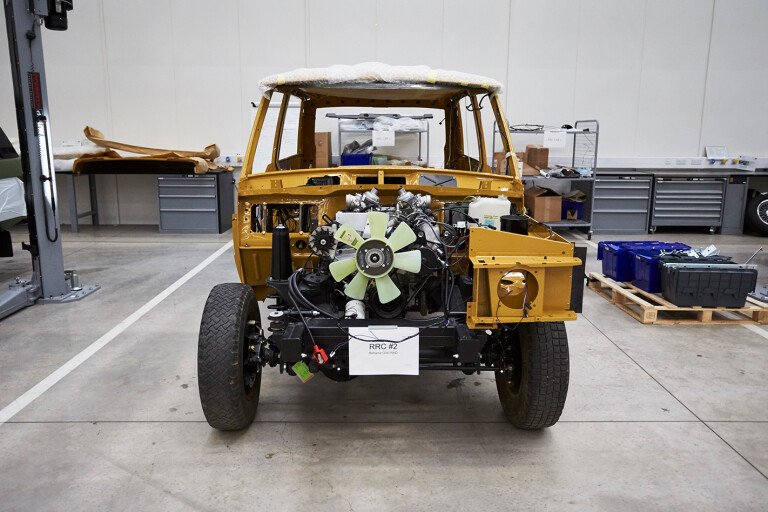
Tim explains that the business also encompasses a Reborn program, which sees Jaguar Land Rover Classic sourcing and restoring select classic models to authentic specifications. This project was launched in April 2016 for Land Rover Series I, followed in 2017 by the original two-door Range Rover Classic, and more recently a Jaguar E-Type program featuring a batch of 10 Series 1 E-Types.
Stepping through the sliding timber barn doors that lead from showroom to workshop, we see a Jaguar E-Type that’s part of the Reborn program sitting somewhat forlornly in one bay, its seats and interior already removed and its parts being meticulously extracted, catalogued, tagged and boxed, nut by painstaking bolt, for replacement or reassembly. It’s a process that will take a single dedicated specialist an estimated 2500 hours to complete, as Tim explains that the same person who strips the car must also rebuild it.
That said, various specialist work, such as paint and panel, engines and gearbox, are sent off for completion before being returned to the technician for reassembly. Tim adds that JLR has invested heavily in sourcing and sustaining traditional manufacturing skills, with an estimated 120 specialists, many with decades of experience working solely on the models catered for, employed at the new facility.
“Knowledge is the muscle. In this organisation, everybody together knows so much, but you don’t find one specialist who knows everything. It’s a team approach,” he says.
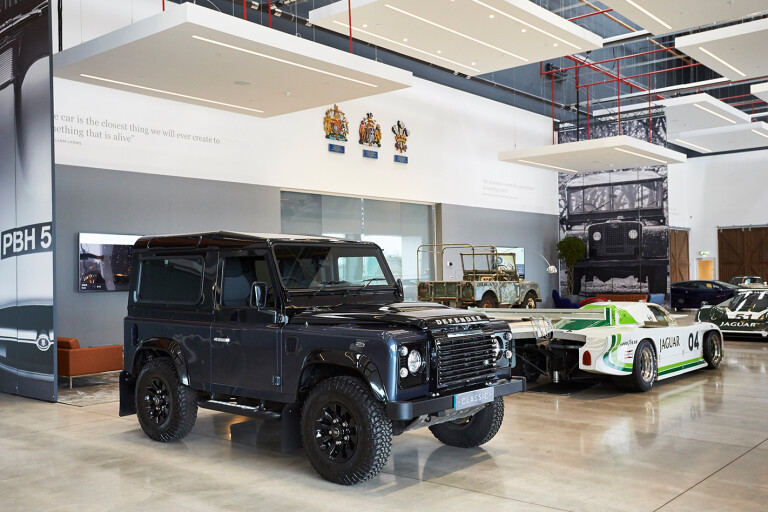
So while Jaguar Land Rover Classic has built an already solid reputation in fully restored cars, the business has also diversified into the lucrative field of ‘Continuations’, as Hannig explains.
“We do a very small number of continuations, like we’ve done the lightweight E-Type [and] we’re now building the Jaguar XKSS, which is technically a brand-new vehicle, but identical to the 1957 specification. We jokingly say we paused for a very long tea-break; we did stop building them; but now we’re doing the rest that we never built,” he laughs.
“It takes an extraordinarily high effort to make them, because you need to make everything from scratch.”
Hannig explains that building these classic cars from scratch entails a much higher level of complexity than even the best restoration, “because in order to build a vehicle you need to understand it in its entirety.”

Hannig and his team go back through the archives of these cars, digitising old blueprints, converting the drawings to CAD data, and even scanning parts to find the details within. The process is incredibly painstaking and laborious, first bringing the drawings and other technical information into a modern technical documentation phase, then creating every single component, then building the cars to exacting standards, and ensuring they run properly and drive in a manner that justifies their eventual price tag – including a shakedown by 1988 Jaguar-driving Le Mans winner Andy Wallace, who is Jaguar Land Rover Classic’s chief test driver.
“With the lightweight E-Type we managed to completely activate the E-Type knowledge … I would say now proudly, the team can master anything,” Hannig says.
JLR first produced a batch of six lightweight E-Type racers in 2014. The cars pay homage to the coveted 60s ‘Special FT’ lightweight E-Types, of which there were originally meant to be 18, but only 12 were built. The continuation cars are referred to as “the missing six.”
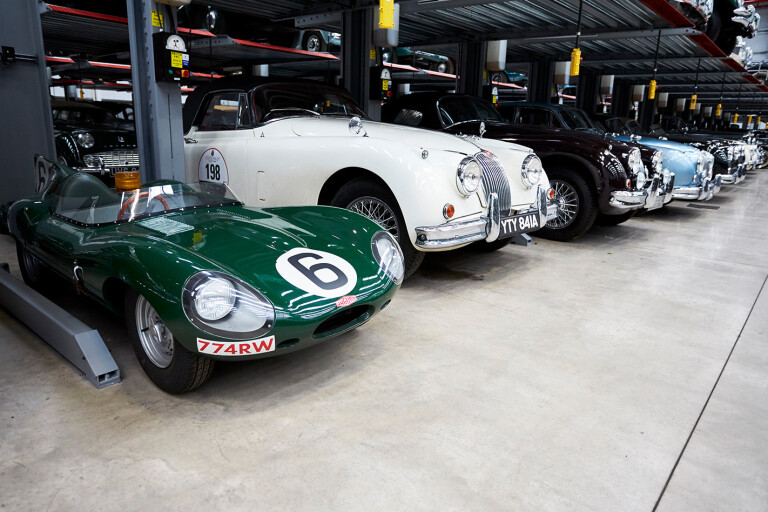
Having learned the ropes of Continuation from that program, the team then turned its hand to another legendary Jaguar, the XKSS. The March 2016 announcement that Jaguar Land Rover Classic would faithfully recreate the batch of XKSS roadsters destroyed in the infamous Browns Lane factory fire of 1957, really got collectors buzzing.
The XKSS was originally created as a road-going sports car in the wake of Jaguar’s multiple Le Mans-winning D-Type. It retained the latter’s race-ready running gear, including a 195kW 3.4-litre straight six, topped by a trio of Weber DCO3 carburettors, but eschewed the D-Type’s distinctive rear fin, while adding a higher windscreen and a passenger-side door.
A mere 16 units had been built and delivered, including one to actor Steve McQueen, with another nine ready for shipment when fire tore through the Browns Lane plant, prematurely ending the XKSS model’s production run and instantly marking it as among the rarest of classics.
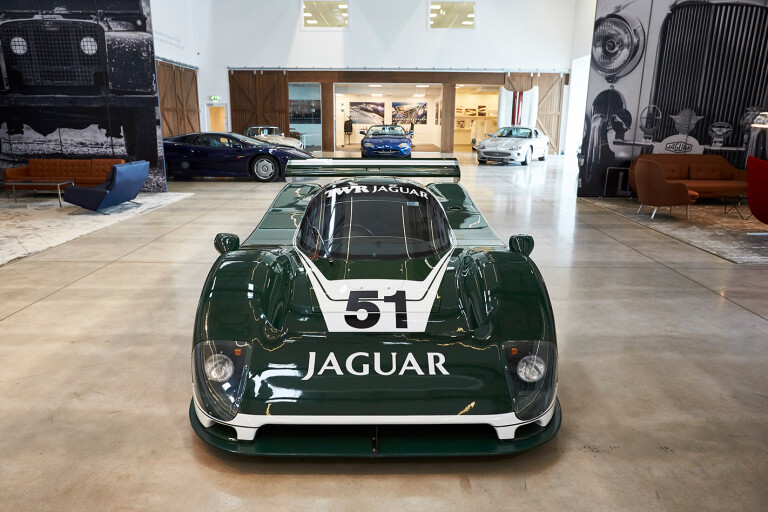
In a posthumous nod to legendary predecessors, each of the continuation cars would carry the chassis number of one of the nine lost originals, and each would be faithfully recreated right down to hand-wheeled magnesium-alloy body panels, bronze welding, imperial measurements, Smiths gauges and brass dash knobs.
The first of these rare road-going sports cars made its debut at the Petersen Museum in LA in November 2016, with Jaguar Classic declaring each would take an estimated 10,000 man hours to build, while simultaneously cruelling many a millionaire’s dreams by declaring the cars had all been pre-sold to “established collectors and customers.” Pundits estimated an unconfirmed price tag of circa-A$2million.
“But is there anything JLR won’t do, such as adding sat-nav or other modern features to a period-perfect continuation car?
“I want to say we are in the business of fulfilling dreams, not judging them,” says Tim, before adding that ‘no’ is a word they prefer to use sparingly. “Still, there are things we advise upon, and specifically on things like continuations, we are very, very careful about modifications.”

Two changes they do happily make to the original configuration of the continuation cars is the use of a more ethanol-resilient fuel tank material, and a different brake line material, because the brake fluid today is more aggressive than it was in the period. They also instal hazard lights, and offer the options of a more modern starter motor and seatbelts integrated with the car’s safety structure.
“So we do deviate, but sympathetically,” says Tim.
In terms of the customer type, Hannig says there is a wide variety, ranging from wealthy collectors for whom money is no object, to far more humble enthusiasts for whom it is a stretch to restore a car. But the common denominator is their passion for the marque, says Tim, and it’s this that’s paying the wages of the 138 people employed at Jaguar Land Rover Classic.
As we walk around the workshop space, featuring 53 bays, and organised into dedicated strip-down, remanufacturing and assembly zones for the Land Rover Series I, Range Rover Classic and Jaguar E-Type Reborn restoration programs, it’s impossible not to be impressed by the clean, clinical organisation of the operation.
There’s also an engine shop, and the build line for the Jaguar XKSS continuation cars, while in another area is a dedicated servicing zone for the rare XJ220 supercar, the turbocharged, 340km/h monster that was at one point the fastest production car in the world. Tim explains that the latter bays are operated by specialist Jaguar supercar technicians, some of whom have supported the XJ220 program since it entered production 25 years ago.
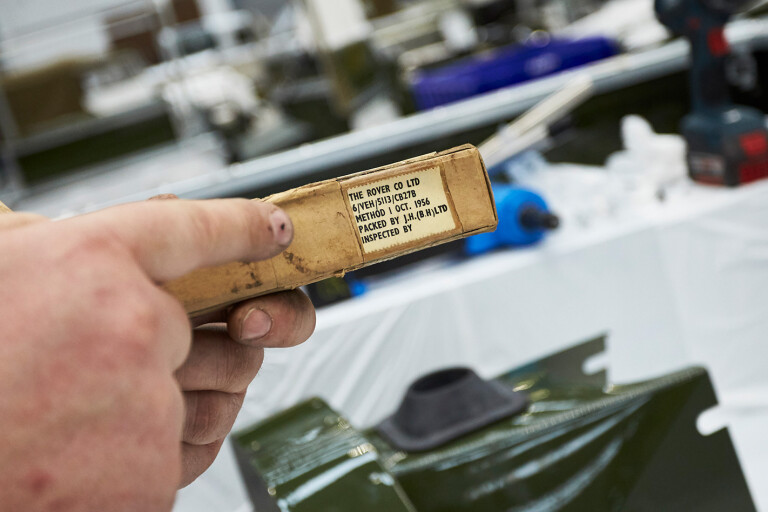
With more than 1.5 million classic Jaguar and Land Rover vehicles in existence worldwide, the company’s bet on investing in traditional manufacturing and restoration skills appears a sound one to, as Tim says, “ensure enthusiasts are able to give cars with a glorious past, a glorious future.”

COMMENTS